Blind Pimple Under The Skin: 10 Remedies + Prevention Tips
Educate yourself on the symptoms, causes, and home remedies for these pimples.

Image: Shutterstock
You might have noticed blind pimples under the skin that develop due to a combination of dirt, oil, and bacteria that clog your pores. Unlike your usual pimples, blind pimples develop underneath the skin and are not noticeable until you touch them.

While they are difficult to get rid of, some natural remedies can help you get rid of the concealed pimple under your skin effectively. Read on to know more about blind pimples and a few tips to prevent them from forming. Scroll down!
What Is A Blind Pimple?
A ‘blind pimple’ is a term used to refer to the acne that develops under the surface of the skin. These hidden pimples are not quite noticeable from a distance as they may be latent or subcutaneous, but you can feel them under the skin when you touch the spot. They are usually a result of a nodule or cyst.
A typical acne lesion is referred to as a comedone. Whiteheads and blackheads are the mildest forms of acne lesions. A whitehead is a closed comedone, while a blackhead is an open comedone.
A blind pimple is a closed comedone that develops deep within your skin. As such pimples begin emerging through the skin, they may develop into whiteheads. In other cases, they just disappear. Blind pimples usually do not have heads like other types of pimples.
A blind pimple goes through several stages before it goes away. Learn more about it in the next section.
Key Takeaways
- Blind pimples usually develop under the skin’s surface because of dirt, oil, and bacteria clogging your pores.
- Hormonal imbalances, menstruation, and stress may cause blind pimples.
- Raw honey, aloe vera, warm compress, and other natural remedies may help reduce the pain and inflammation.
- Oil-free skin care products may help unclog pores and treat blind pimples.
- Avoid scrubbing your face daily and shampoo your hair regularly to help prevent the formation of blind pimples.
Stages Of A Blind Pimple
Stage 1: Initial Formation
A pore becomes clogged due to the accumulation of excess sebum (skin oil), dead skin cells, and acne-causing bacteria. Unlike regular pimples, it lacks a visible head.
Stage 2: Inflammation
The clogged pore triggers an inflammatory response, leading to redness and tenderness beneath the skin’s surface.
Stage 3: Painful Bump
As the blind pimple progresses, it develops into a painful lump under the skin. It does not have the characteristic white or yellow top of regular pimples.
Stage 4: Resolution Or Eruption
A blind pimple may either resolve on its own or eventually lead to the formation of a noticeable white or yellow head.
Let us now take a look at a few home remedies that can help treat inflammatory acne lesions like a blind pimple.
10 Home Remedies To Get Rid Of Pimples Under The Skin
- Warm Compress
- Essential Oils
- Raw Honey
- Toothpaste
- Aloe Vera
- Apple Cider Vinegar
- Lemon Juice
- Epsom Salt
- Green Tea Bags
- Ice
Note:
Most of the remedies discussed below may help prevent the occurrence of blind pimples and tackle possible blemishes.
1. Warm Compress
A warm compress can help push the blind pimple to the surface of the skin. It can also help drain the pus within the acne by opening up your skin pores. It may also help relieve pain from acne (1).
You Will Need
A warm compress
What You Have To Do
- Apply a warm compress to the blind pimple.
- Allow it to work for 10-15 minutes.
- Remove the compress.
How Often You Should Do This
You can do this 2-3 times daily.
2. Essential Oils
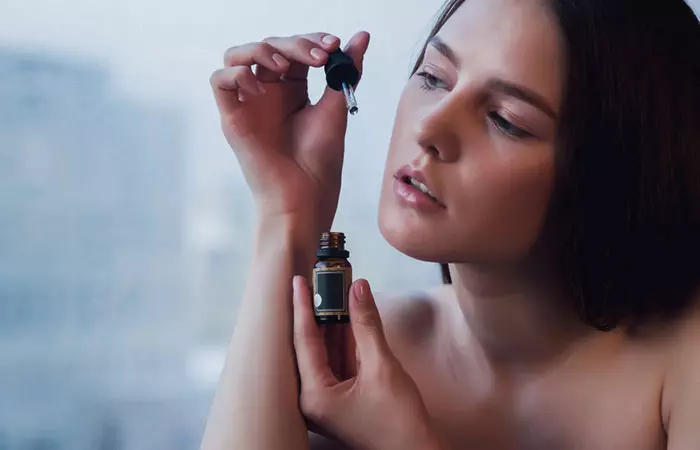
a. Tea Tree Oil
The anti-inflammatory and antimicrobial properties of tea tree oil can help fight the inflammation and infection associated with a blind pimple (2).
Note: Do not apply pure tea tree oil directly on your skin as it can cause irritation.
You Will Need
- 1-2 drops of tea tree oil
- 1 teaspoon of sweet almond oil (or any other carrier)
- Cotton swabs
What You Have To Do
- Mix one to two drops of tea tree oil with a teaspoon of sweet almond oil.
- Apply the mixture directly to the blind pimple using a cotton swab.
- Leave it on overnight.
- Rinse it off in the morning.
How Often You Should Do This
You can do this once daily.
b. Cinnamon Oil
The powerful bactericidal activities of cinnamon oil can help eliminate acne-causing bacteria like P.acnes (3).
They may help prevent the occurrence of blind pimples.
You Will Need
- 1-2 drops of cinnamon oil
- 1 teaspoon of any carrier oil
What You Have To Do
- Add one to two drops of cinnamon oil to a teaspoon of any carrier oil.
- Mix well and apply it to the affected area.
- Leave it on overnight.
- Wash it off the next morning.
How Often You Should Do This
You can do this daily.
3. Raw Honey

Honey possesses antimicrobial properties that work against multiple skin microbes. Its anti-inflammatory properties can also help reduce the inflammation in the pimple-affected area (4).
You Will Need
Raw honey (as required)
What You Have To Do
- Dab a little honey on the affected area.
- Leave it on for 20-30 minutes. You can also leave it on overnight.
- Wash it off.
How Often You Should Do This
You can do this 1-2 times daily.
4. Toothpaste
The main component of almost all kinds of toothpaste is baking soda or sodium bicarbonate. The anti-inflammatory and antibacterial nature of this compound may help in drying and healing the zit faster (5).
You Will Need
Any white toothpaste (as required)
What You Have To Do
- Dab a little toothpaste on the affected area.
- Leave it on overnight.
How Often You Should Do This
You may do this once daily.
 Quick Tip
Quick Tip5. Aloe Vera
Aloe vera
has anti-inflammatory and healing properties that may help reduce the swelling and inflammation in the affected area (6).
You Will Need
Fresh aloe vera gel
What You Have To Do
- Apply aloe gel directly to the blind pimple.
- Leave it on for 20-30 minutes before rinsing it off.
How Often You Should Do This
You can do this 2-3 times daily.
6. Apple Cider Vinegar

Apple cider vinegar exhibits antimicrobial and anti-inflammatory activities (7). These activities may help fight the acne-causing microbes and reduce inflammation. However, more scientific evidence is warranted to prove this effect.
You Will Need
- 1 tablespoon of raw apple cider vinegar
- 3 tablespoons of water
- Cotton balls
What You Have To Do
- Add a tablespoon of apple cider vinegar to three tablespoons of water.
- Mix well and dip a cotton ball in it.
- Apply the mixture all over your face and leave it on for 10-15 minutes.
- Rinse it off.
How Often You Should Do This
You can do this once daily.
7. Lemon Juice
Lemon
exhibits bactericidal and anti-inflammatory properties (8), (9). Hence, it may help reduce acne and prevent its recurrence.
You Will Need
- 1 teaspoon of freshly squeezed lemon juice
- 2 teaspoons of water
- Cotton swabs
What You Have To Do
- Add two teaspoons of water to freshly squeezed lemon juice.
- Mix well and apply the mixture to the pimple using a cotton swab.
- Leave it on for 20-30 minutes before rinsing it off.
How Often You Should Do This
You may do this once daily.
8. Epsom Salt
Epsom salt
contains magnesium that can help reduce inflammation (10).
It reduces acne by getting rid of dirt, dead skin cells, and sebum accumulated in the pores.
You Will Need
- ½ teaspoon of Epsom salt
- 1 cup of warm water
- Cotton swabs
What You Have To Do
- Add half a teaspoon of Epsom salt to a cup of water.
- Mix well and dip a cotton swab in it.
- Apply the mixture to the acne.
- Leave it on until it dries.
How Often You Should Do This
You can do this 1 to 2 times daily.
 Quick Tip
Quick Tip9. Green Tea Bags

Green tea polyphenolsi Naturally occurring plant compounds that have antioxidant properties, aid in disease prevention, and offer other health benefits. possess antimicrobial and anti-inflammatory properties that may help in treating acne (11). They also help in controlling the secretion of sebum (11). This may prevent the blind pimple from surfacing.
You Will Need
1-2 used green tea bags
What You Have To Do
- Take the green tea bags and refrigerate them.
- Apply the cold green tea bags all over your face.
- Leave it on for 20-30 minutes.
- Rinse it off.
How Often You Should Do This
You can do this 1 to 2 times daily.
10. Ice
Ice cubes
can reduce redness, swelling, and inflammation (12). Ice can minimize skin pores and reduce inflammation around the pimple.
You Will Need
Ice cubes
What You Have To Do
- Put the ice cubes in a clean towel and fold it.
- Hold it against the affected area for 5 minutes.
How Often You Should Do This
Do this 3-4 times daily.
These remedies may aid the healing of the blind pimple to a great extent. Check out the causes of blind pimples below.
What Causes A Blind Pimple Under The Skin?
Your skin has small sacs called follicles that connect the pores to the oil glands beneath it.
The oil glands secrete sebum (an oily liquid) that may carry bacteria, dirt, and dead skin cells to the surface of the skin via the follicle. Small hairs usually grow through this follicle.
However, in some cases, there are chances that this follicle is blocked. This causes the sebum to build up underneath the skin, thereby forming a plug. Such plugs may be exposed to bacteria and result in swelling and inflammation. A blind pimple, like most forms of pimples, is caused due to the breakdown of these infected plugs.
Propionibacterium acnes (P. acnes) are bacteria that live on the surface of the skin and are responsible for causing infectious pimples.
Some of the most common factors that increase your risk of developing acne are:
- Hormonal imbalances
- Certain cosmetics
- Stress
- Menstruation
The common symptoms associated with the appearance of an unseen pimple are listed below.
Signs And Symptoms
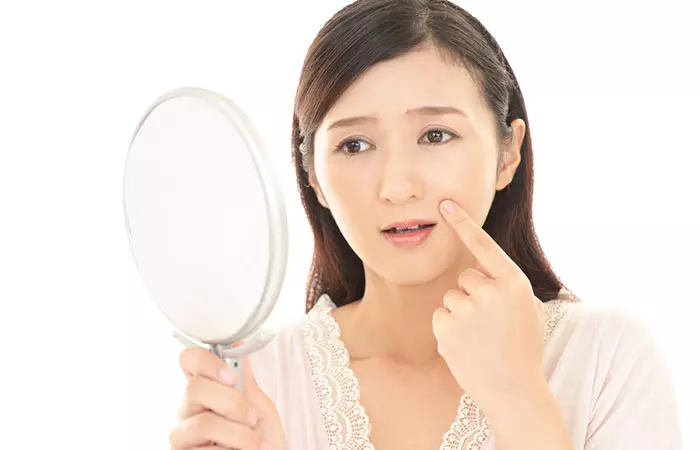
- Swelling
- Inflammation in the surrounding skin
- Pain upon touching
Some individuals often confuse boils or cysts for pimples. To help you understand the differences better, here is a summary differentiating a pimple, a boil, and a cyst.
Pimples Vs. Boils Vs. Cysts
Pimples
- Pimples occur in different shapes and sizes and are most often found on the face, neck, chest, shoulders, or back.
- Acne or pimples usually begin in the pores of your skin.
- Pimples are more common in adolescents, but nowadays, they also occur in adults.
- They can be triggered by hormonal imbalances, certain cosmetics, stress, certain foods, or may even be hereditary.
Boils
- A boil usually appears as a small inflamed bump that gradually grows and is filled with pus. It is usually found in areas where you sweat a lot or where your clothes rub against your skin – like your face, buttocks, underarms, neck, and thighs.
- Several boils can cluster together to form a carbunclei A cluster of connected boils under the skin that are red, bloated, and painful is known as a carbuncle. .
- A boil also forms in the pores or follicles on your skin and is a result of a bacterial infection.
- It is more common in teenagers and younger adults. Men are more affected than women.
- It can be caused due to vulnerable medical conditions like diabetes, eczema, or a weakened immune system. Sharing the same towels, razors, or cosmetics can also cause boils.
Cysts
- Cysts are sac-like growths that are often caused due to an infection or clogging of glands.
- They can occur almost anywhere on the body.
- They are a result of clogged sebaceous glandsi Oil-producing glands that generate sebum that are found throughout the skin, with the exception of a person's palms and soles. .
- These can cause pain if they are infected or ruptured.
- Some cysts can also be cancerous and pose a higher risk to health as compared to pimples and boils.
- Tumors, infections, chronic inflammatory conditions, and certain genetic conditions are associated with the appearance of cysts.
Along with the remedies, you also need to follow the below tips to prevent its recurrence.
Prevention Tips
- Avoid popping, squeezing, or constantly touching the invisible pimple.
- Wash your face with a mild cleanser no more than two times daily.
- Avoid scrubbing the facial skin daily. Instead, scrub one to two times a week.
- Wash the pillowcases regularly.
- Keep the screen of your phone clean.
- Avoid going to bed with makeup on.
- Use non-comedogenic and oil-free products.
- Wash your hair regularly as the dirt from your hair that touches your skin constantly can also cause pimples.
- Choose your skin care products and cosmetics carefully.
Moreover, incorporating methods on how to prevent acne into your skincare routine may reduce the frequency of under-the-skin pimples in the long run.
Infographic: Top 5 Home Remedies For Blind Pimples
Dealing with blind pimples can be annoying, especially because they do not have a visible head and are covered by skin. While home remedies may take time to show effective results as suggested, a few may offer instant relief. We have shortlisted the most effective home remedies that can reduce pain and swelling faster and may make the blind pimple disappear in no time. Check out the infographic below to learn more. Illustration: StyleCraze Design Team
A blind pimple is a closed comedone that develops under the surface of the skin and cannot be seen, but felt instead. This kind of acne usually occurs as a result of hormonal changes, stress, comedogenic cosmetics, and menstruation which lead to excessive sebum, clogged hair follicles, and eventually, bacterial buildup. Inflammation and a sensation of pain when touched are the two most common signs that indicate the presence of blind pimples. There are a number of remedies to cure blind pimples, such as essential oils, warm compress, raw honey, ice, toothpaste, and apple cider vinegar. If you experience blind pimples frequently, or the remedies do not help, consult a dermatologist.
Frequently Asked Questions
What are the best over-the-counter treatments for blind pimples?
Benzoyl peroxide and salicylic acid are effective over-the-counter treatments for blind pimples because they help clear clogged pores and lessen inflammation (13). Topical retinoids, tea tree oil, and niacinamide can also keep the area moisturized while soothing the skin and preventing future breakouts.
How can diet influence the development of blind pimples?
Diet influences the formation of blind pimples by reducing inflammation and changing hormone levels (14). Heavy sugar, dairy, and processed foods may induce acne, while a balanced diet with fruits, vegetables, and healthy fats may help reduce inflammation and support skin health.
When to see a dermatologist for blind acne?
If your blind pimple does not respond to any of the above remedies or tips, it is best to visit a dermatologist to get it treated.
How long does a blind pimple last?
A blind pimple can last for a week or two or even more if left untreated.
What can happen when you pop a pimple?
If you decide to pop a pimple on your own, it can lead to the development of more pimples and may even cause permanent scarring.
What to put on a blind pimple overnight?
Ingredients like aloe vera gel or essential oils may work faster. However, they may not remove the pimple overnight. Medications like Retin A or acne stickers work best on acne when left overnight.
How to pop a pimple that is under the skin?
You must never pop a pimple on your own. However, learning what to do after popping a pimple is essential if you can’t resist popping the pimples. It is crucial to prevent scars and promote faster healing. You can always visit a dermatologist to get it popped professionally if required.
How do dermatologists remove blind pimples?
A dermatologist may inject corticosteroids into the pimples to reduce their size and decrease the risk of scarring. They may also prescribe topical or oral antibiotics to get rid of the bacteria contributing to the development of the pimples.
Why do blind pimples hurt?
Blind pimples hurt due to the pus formed inside them. The pus builds up and puts pressure on the nearby nerves, causing pain.
Does salicylic acid get rid of blind pimples?
Yes, salicylic acid peels can be effective in removing dead skin and unclogging your pores. It also helps dry out the pimples and reduces inflammation, thus reducing your risk of future breakouts (15).
Do pimple patches help blind pimples?
Yes, pimple patches contain ingredients like salicylic acid that can dry out the pimple and soothe inflammation (16), (17). Ensure that you follow the instructions on the package carefully before trying it.
Illustration: How To Get Rid Of A Blind Pimple: 10 Remedies + Prevention Tips
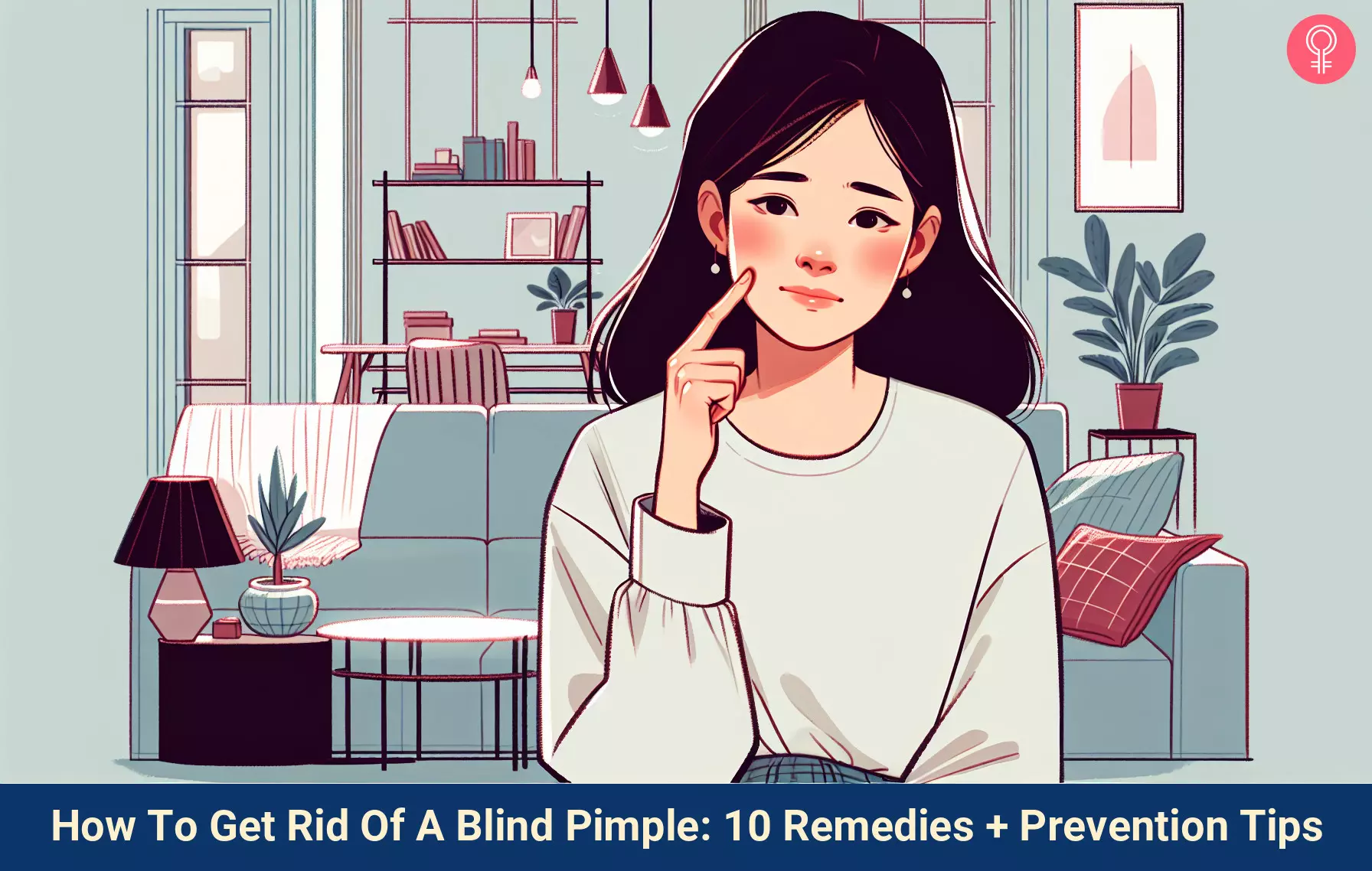
Image: Dall·E/StyleCraze Design Team
References
Articles on StyleCraze are backed by verified information from peer-reviewed and academic research papers, reputed organizations, research institutions, and medical associations to ensure accuracy and relevance. Read our editorial policy to learn more.
- Maybhate, C. “Skin Care for Acne-Prone Skin.” Ayurveda Holistic Community (2005): 1-5.
https://www.ncbi.nlm.nih.gov/books/NBK279208/ - Pazyar, Nader et al. “A review of applications of tea tree oil in dermatology.” International journal of dermatology vol. 52,7 (2013): 784-90.
https://pubmed.ncbi.nlm.nih.gov/22998411/ - Zu, Yuangang et al. “Activities of ten essential oils towards Propionibacterium acnes and PC-3, A-549 and MCF-7 cancer cells.” Molecules (Basel, Switzerland) vol. 15,5 3200-10. 30 Apr. 2010.
https://pubmed.ncbi.nlm.nih.gov/20657472/ - McLoone, Pauline et al. “Honey: A Therapeutic Agent for Disorders of the Skin.” Central Asian journal of global health vol. 5,1 241. 4 Aug. 2016.
https://www.ncbi.nlm.nih.gov/pmc/articles/PMC5661189/ - Drake, D. “Antibacterial activity of baking soda.” Compendium of continuing education in dentistry. (Jamesburg, N.J. : 1995). Supplement vol. 18,21 (1997): S17-21;quiz S46.
https://pubmed.ncbi.nlm.nih.gov/12017929/ - Surjushe, Amar et al. “Aloe vera: a short review.” Indian journal of dermatology vol. 53,4 (2008): 163-6.
https://www.ncbi.nlm.nih.gov/pmc/articles/PMC2763764/ - Yagnik, Darshna et al. “Antimicrobial activity of apple cider vinegar against Escherichia coli, Staphylococcus aureus and Candida albicans; downregulating cytokine and microbial protein expression.” Scientific reports vol. 8,1 1732. 29 Jan. 2018.
https://www.ncbi.nlm.nih.gov/pmc/articles/PMC5788933/ - de Castillo, M C et al. “Bactericidal activity of lemon juice and lemon derivatives against Vibrio cholerae.” Biological & pharmaceutical bulletin vol. 23,10 (2000): 1235-8.
https://pubmed.ncbi.nlm.nih.gov/11041258/ - Galati, Enza Maria et al. “Anti-inflammatory effect of lemon mucilage: in vivo and in vitro studies.” Immunopharmacology and immunotoxicology vol. 27,4 (2005): 661-70.
https://pubmed.ncbi.nlm.nih.gov/16435583/ - Sugimoto, Jun et al. “Magnesium decreases inflammatory cytokine production: a novel innate immunomodulatory mechanism.” Journal of immunology (Baltimore, Md. : 1950) vol. 188,12 (2012): 6338-46.
https://www.ncbi.nlm.nih.gov/pmc/articles/PMC3884513/ - Saric, Suzana et al. “Green Tea and Other Tea Polyphenols: Effects on Sebum Production and Acne Vulgaris.” Antioxidants (Basel, Switzerland) vol. 6,1 2. 29 Dec. 2016.
https://www.ncbi.nlm.nih.gov/pmc/articles/PMC5384166/ - Block, Jon E. “Cold and compression in the management of musculoskeletal injuries and orthopedic operative procedures: a narrative review.” Open access journal of sports medicine vol. 1 105-13. 7 Jul. 2010.
https://www.ncbi.nlm.nih.gov/pmc/articles/PMC3781860/ - Meta-analysis comparing efficacy of benzoyl peroxide, clindamycin, benzoyl peroxide with salicylic acid, and combination benzoyl peroxide/clindamycin in acne
https://www.ncbi.nlm.nih.gov/books/NBK78892/# - Effects of Diet on Acne and Its Response to Treatment
https://pmc.ncbi.nlm.nih.gov/articles/PMC7847434/ - Lekak, Olga, et al. “Treatment of Acne Vulgaris With Salicylic Acid Chemical Peel and Pulsed Dye Laser: A Split Face, Rater-Blinded, Randomized Controlled Trial.” ResearchGate, bol 6(4):167-170
https://www.researchgate.net/publication/285220636_Treatment_of_Acne_Vulgaris_With_Salicylic_Acid_Chemical_Peel_and_Pulsed_Dye_Laser_A_Split_Face_Rater-Blinded_Randomized_Controlled_Trial - Qothrunnadaa, Taqiyyah. “PATCHES FOR ACNE TREATMENT: AN UPDATE ON THE FORMULATION AND STABILITY TEST.” ResearchGate, ISSN: 0975-7058
https://www.researchgate.net/publication/357041604_PATCHES_FOR_ACNE_TREATMENT_AN_UPDATE_ON_THE_FORMULATION_AND_STABILITY_TEST - Kuo, Chi-Wen, et al. “Gelatin/Chitosan Bilayer Patches Loaded with Cortex Phellodendron amurense/Centella asiatica Extracts for Anti-Acne Application.” MDPI, vol 13(4), 579
https://www.mdpi.com/2073-4360/13/4/579
Read full bio of Dr. Priya Gill
Read full bio of Shaheen Naser
Read full bio of Anjali Sayee
Read full bio of Monomita Chakraborty













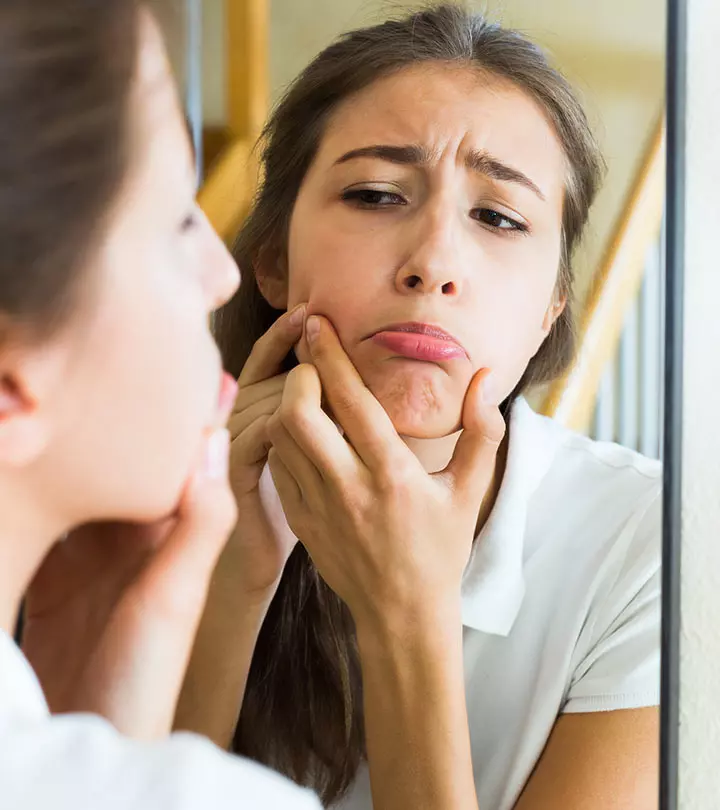
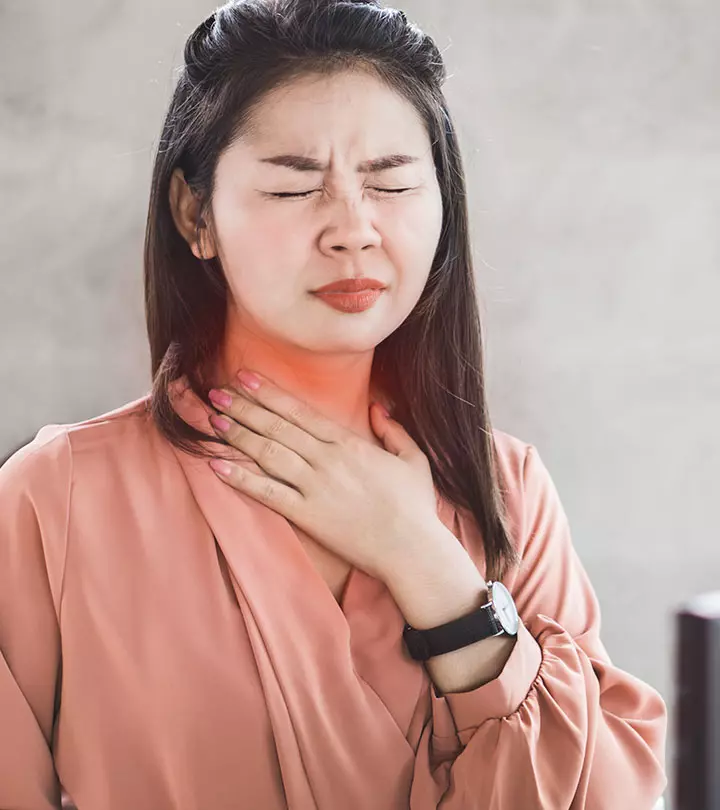



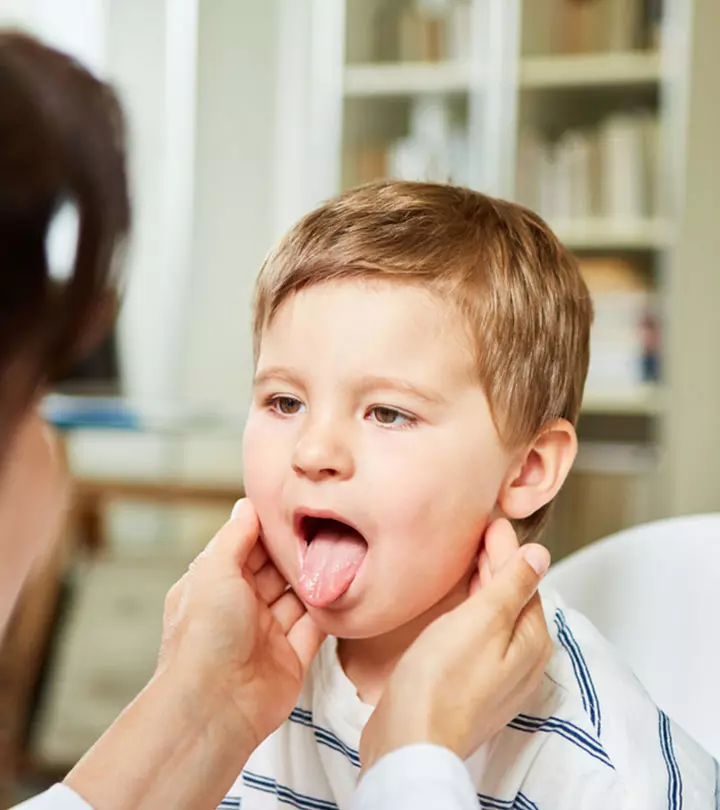
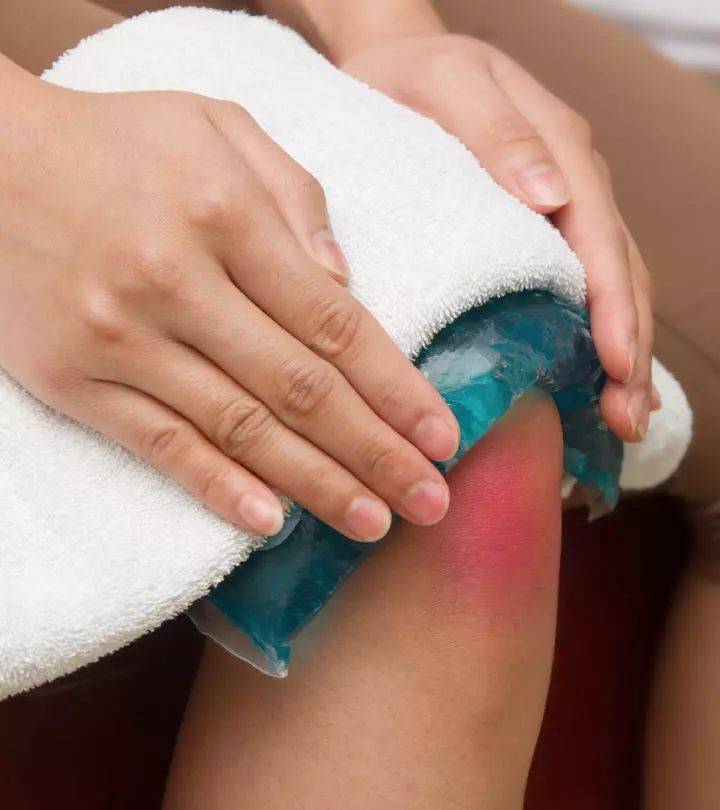




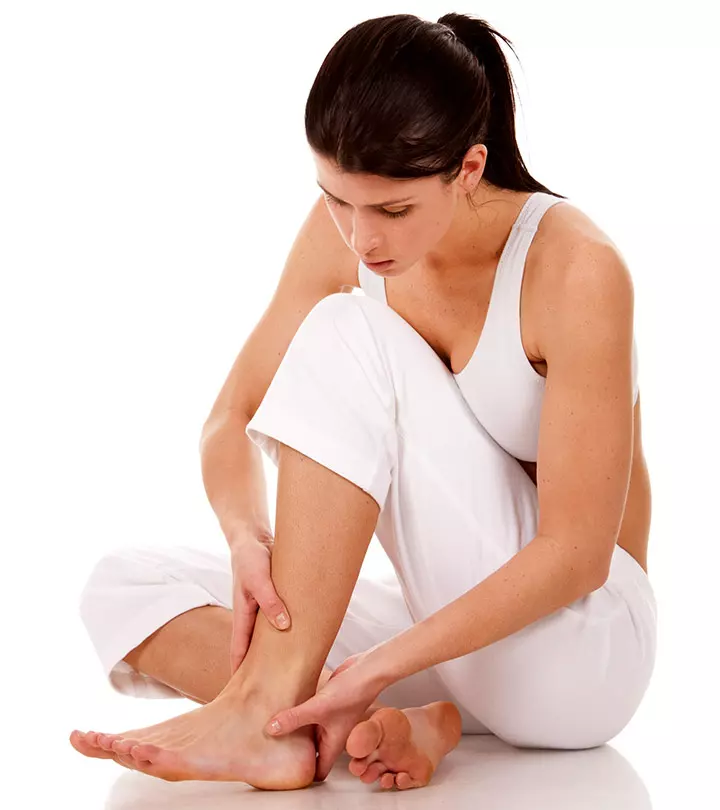

Community Experiences
Join the conversation and become a part of our empowering community! Share your stories, experiences, and insights to connect with other beauty, lifestyle, and health enthusiasts.